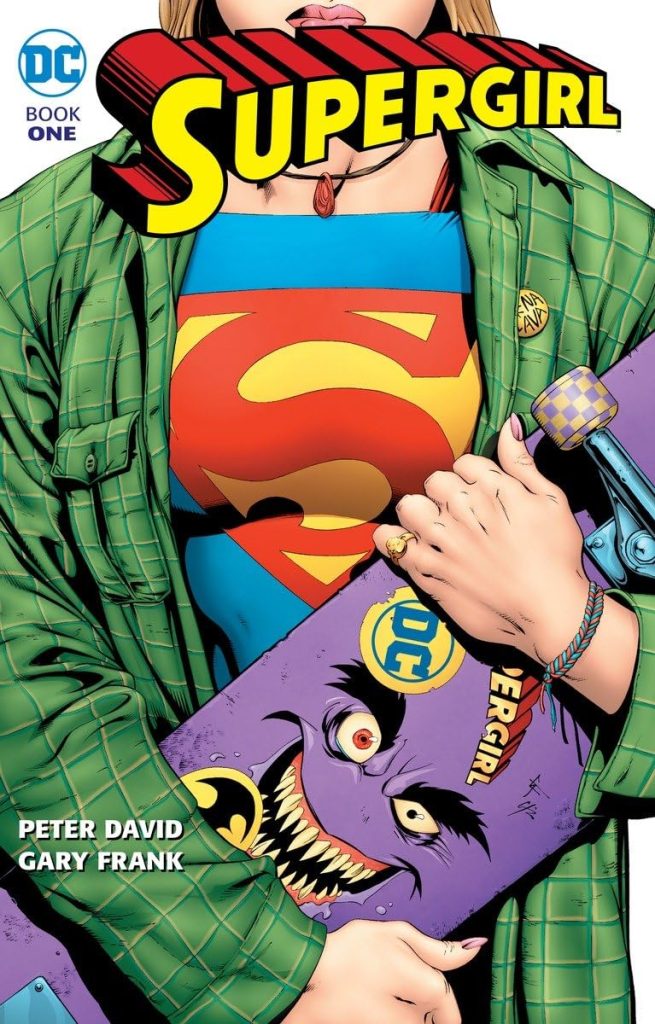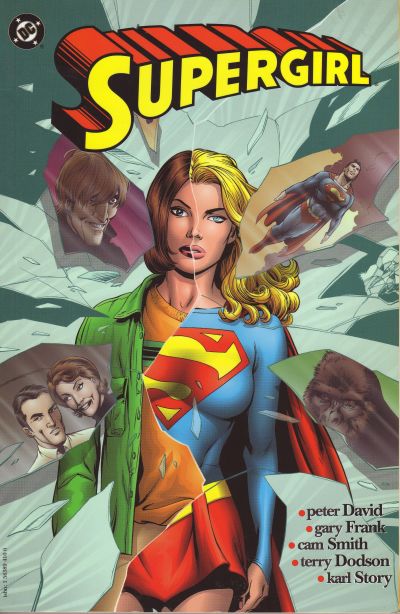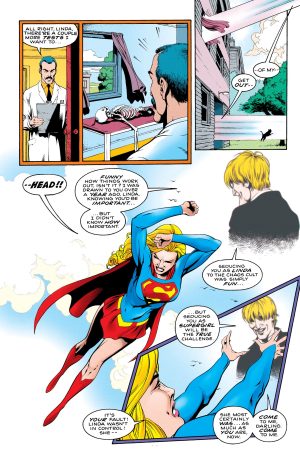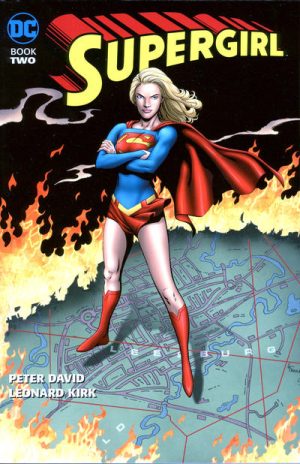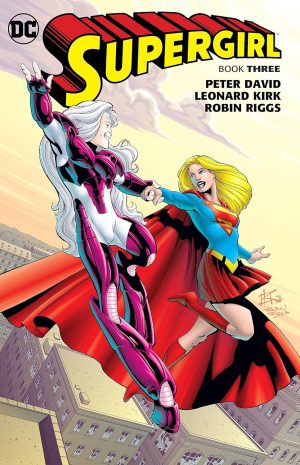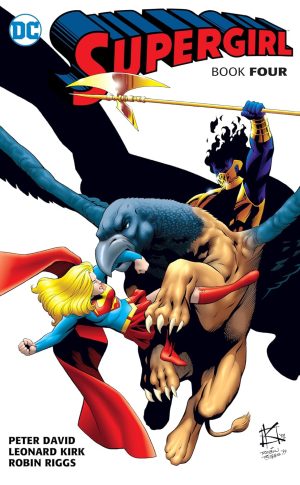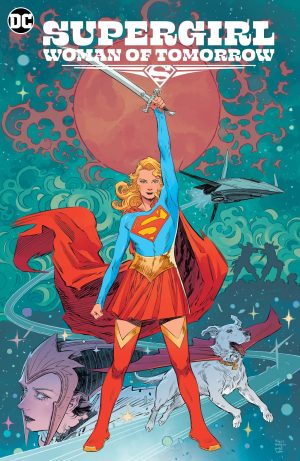Review by Frank Plowright
Peter David’s 1990s work on Supergirl was the longest run the character had seen since the 1960s, and longer than any since, so it’s surprising DC were so slow in issuing collections. There was one attempt in 1998, which this updates by adding a couple of extra stories.
Other creators contribute to those extras, but this is David’s project. Although she resembles the Supergirl of old, this Supergirl is a morphing synthetic life form and from the start David sets a dark tone of Supergirl searching for her place in the world. This is via a heartbreaking short story drawn by Terry Dodson about her being haunted by people she failed to save.
When the reprints of the ongoing series begin it’s with Linda Danvers, presumed killed by Satanists, greeted with disbelief by her flatmate, and remembering an angry, violent father. Supergirl seems disoriented, yet is able to save a suicidal man mid-air before retrieving her costume from the police. Cults, demons and a sordid British exploiter are far from usual fare for Supergirl, and although common super villains appear, they’re recontextualised to play into the prevailing darkness.
The tone isn’t as obvious as it might be because Gary Frank’s Supergirl is almost exactly the archetype in a bright costume looking toward the sun. He’d already collaborated with David on the Hulk, but this is even better art from a more mature artist. Always a strong storyteller, his characters are now more distinctive, although Ma and Pa Kent are perhaps a little too old. Frank also writes a story delving into Linda’s past, but drops too far into the darkness. Of the other artists used, Jennifer Graves shows definite promise, but later moved to animation.
David keeps Supergirl in the small town of Leesburg, and there’s an exploration of a seedy underbelly as she gradually remembers Linda’s past, but his supporting cast never engages. There’s the flatmate, a hapless local reporter, Linda’s evil ex-boyfriend, the bland potential new one, and her parents, but they drift in and out, rarely connecting. The best single chapter features very little Supergirl, David instead constructing a dark farce of Linda knowing what’s going on when her blind date arrives, but the parents who arranged it ignorant of the date’s true nature. The conversation is cleverly staged, and there’s a continuing David Lynch-like tension in ordinary surroundings, while Buzz introduced as Mr Aldrin with no-one the wiser speaks to the type of place David’s Leesburg is. He’s sometimes unable to maintain the atmosphere by excising something witty, so showing off, but this is head and shoulders above most of the remainder.
That plot is resolved, leaving a clean sheet for Book Two, but this closes with three short stories by other writers exploring the myth of Supergirl as it’s filtered through erratically to the distant future. They’re all standard, filling the pages with little sparkle, the best aspect being the promising art of Robert Teranishi on the third.
This radical reboot of Supergirl was a shock in 1996 for taking DC’s purest character and dropping her in the middle of America’s sordid underbelly. In places the unsettling aspects still have an effect, but it’s never continually good, so now transmits as an interesting idea that doesn’t pay off immediately.
